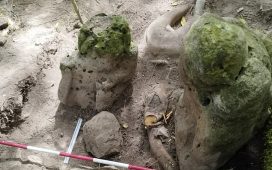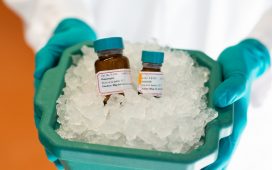Microplastics have been found in dolphin breath for the first time, according to a study that suggests the marine mammals are inhaling the potentially harmful contaminants when they come up for air.
The US research team, whose preliminary findings are published in the journal, Plos One, are concerned about the potential impact of inhaled plastics on the animals’ lungs.
The scientists collected samples of exhaled air from bottlenose dolphins in two sites: Sarasota Bay, Florida, an urban estuary, and Barataria Bay, Louisiana, a rural site. They found microplastics in the exhaled breath from all 11 bottlenose dolphins sampled, leading them to believe the inhaled plastics were airborne.
Studies have found microplastics everywhere, even in pristine locations such as Mount Everest, regardless of urbanisation or development. Transport of such particles by the wind is a key factor in their ubiquitous contamination.
Many of the microplastics found in the dolphin breath samples were polyester, a common polymer used to make clothes, which shed huge amounts of particles when washed, especially in hot cycles.
Leslie Hart, co-author and public health expert at the College of Charleston university in South Carolina, said: “Microplastic inhalation in humans is a budding field, but there have been few studies in wildlife.
“The fact that dolphins have a much larger lung capacity and are taking deep breaths may mean they are exposed to higher doses of microplastics than humans.”
Worldwide, humans and wildlife are exposed to tiny particles of plastic pollution known as microplastics, in air, water and food. They been linked to adverse health impacts. The main exposure routes are ingestion and inhalation. Studies in humans have indicated plastic inhalation can lead to lung inflammation and other respiratory problems.
“We are just starting to understand how dolphins are exposed to microplastics,” said Hart, who has studied plastics in dolphins for a decade. The researchers worked with the Sarasota dolphin research programme at Brookfield Zoo Chicago and the National Marine Mammal Foundation.
That microplastics were found in exhaled breath in the more rural of the two locations confirmed the likelihood of microplastics being transported by air, Hart said.
The researchers were particularly concerned about the potential impact on dolphins in the Barataria Bay area because the cetaceans had already suffered poor pulmonary health due to the Deepwater Horizon oil spill disaster in 2010.
“There is a potential that this could make problems worse,” said Hart.
The researchers relied on an approved method of catch and release and sampled the exhaled breath of the dophins by holding a petri dish over their blowholes. Controls were used for air adjacent to the animals. The researchers acknowledged that the capture of dolphins was opportunistic and may not be representative of the populations as a result.











